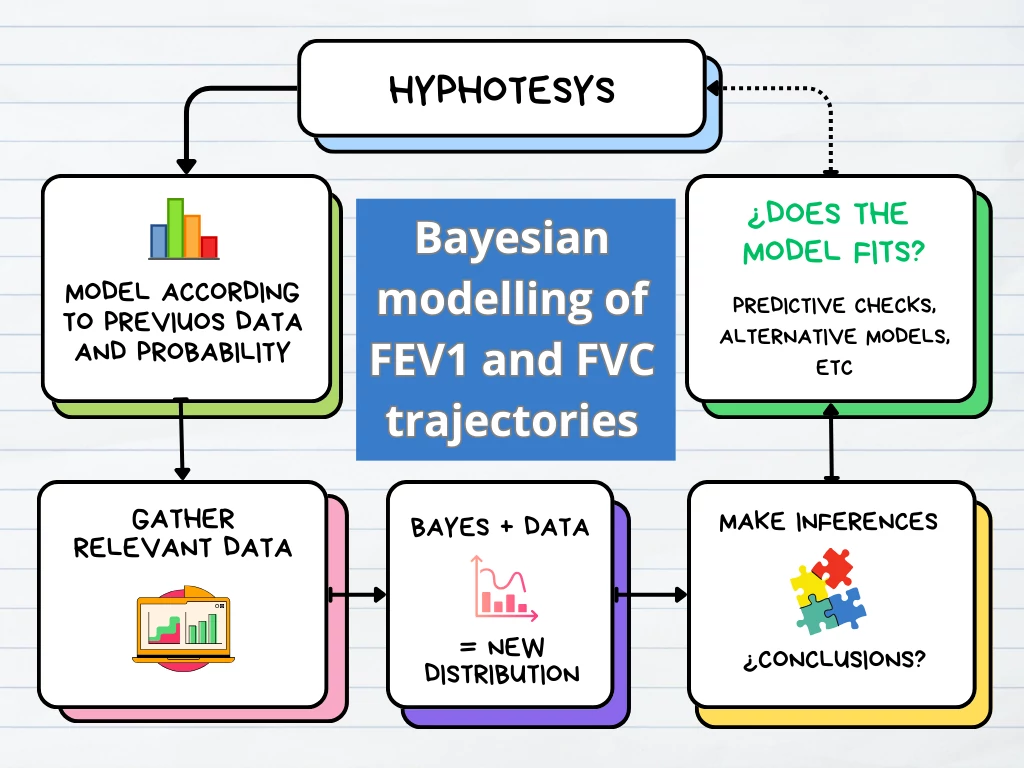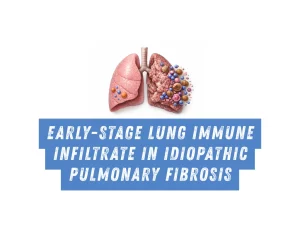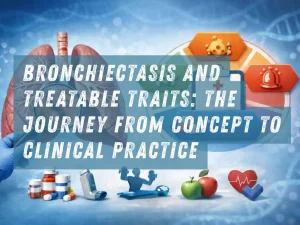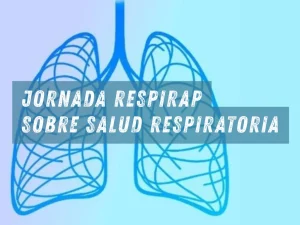Bayesian modelling of combined FEV1 and FVC vital lung function trajectories: relationship with airflow obstruction and PRISm

Introduction: Airflow Obstruction and PRISm Through Bayesian Modelling of FEV1 and FVC Trajectories
Previous studies have shown that there is a range of FEV1 trajectories across the lifespan.
Yet, how trajectories defined by the combination of both FEV1 and FVC relate to airflow obstruction (AO; FEV1/FVC<0.7 and FEV1< 80% ref.) or Preserved Ratio Impaired Spirometry (PRISm; FEV1/FVC ≥ 0.7 and FEV1 < 80% ref.) is unknown.
Methods: Applying Bayesian Modelling to FEV1 and FVC Trajectories in the Framingham Offspring Cohort
We applied Bayesian non-parametric mixture modeling to data from the Framingham Offspring Cohort (FOC). Trajectory subgroups were identified by simultaneously modeling both pre-bronchodilator FEV1 and FVC (in liters) as a function of age and height.
We modeled all males >20 yr. (N=1,333). The prevalence of AO or PRISm and age of onset was compared across trajectories.
Results: Seven Distinct Trajectories Identified via Bayesian Modelling of FEV1 and FVC
This analysis identified seven FEV1 and FVC defined trajectories.
Their description (Table1) was based on both measurements, which were in accordance with each other.
Conclusion: Associations Between Airflow Obstruction, PRISm, and Bayesian Modelled FEV1 and FVC Trajectories
Bayesian non-parametric trajectory modeling identified seven combined FEV1 and FVC life-course trajectories differentially associated to AO or PRISm.
Authors
Núria Olvera Ocaña, Àlvar Agustí, James Ross, Rosa Faner
Read more details at
Noticias relacionadas

The early-stage lung immune infiltrate in patients with Idiopathic Pulmonary Fibrosis differentiate stable and progressive disease
Early-stage lung immune infiltrate in idiopathic pulmonary fibrosis and its association with stable versus progressive disease in early IPF patients.

Bronchiectasis and treatable traits: the journey from concept to clinical practice
Review of the treatable traits approach in bronchiectasis, exploring phenotypes, endotypes, comorbidities, and its translation into clinical practice.

Jornada RespirAP sobre salud respiratoria
Participa en la Jornada RespirAP el 6 de mayo de 2026, un evento clave para impulsar un plan estratégico nacional en salud respiratoria. Formación, colaboración y acción.
Artículos
Estudios
- 759397·Alberto Sandiumenge et Al.-Systemic Inflammation Differences in Brain-vs. Circulatory-Dead Donors: Impact on Lung Transplant Recipients
- 759578·Alberto Papi et Al.-Relationships between symptoms and lung function in asthma and/or chronic obstructive pulmonary disease in a real-life setting: the NOVEL observational longiTudinal studY
- 759689·Kilian Vellvé et Alt.- Pulmonary vascular reactivity in growth restricted fetuses using computational modelling and machine learning analysis of fetal Doppler waveforms.
- 769273· Singh D, Criner GJ, Agustí A et al. Benralizumab Prevents Recurrent Exacerbations in Patients with Chronic Obstructive Pulmonary Disease: A Post Hoc Analysis
- 769685·Nuria Olvera et Al.- Lung Tissue Multi-Layer Network Analysis Uncovers the Molecular Heterogeneity of COPD
Imagen desarrollada con Canva
